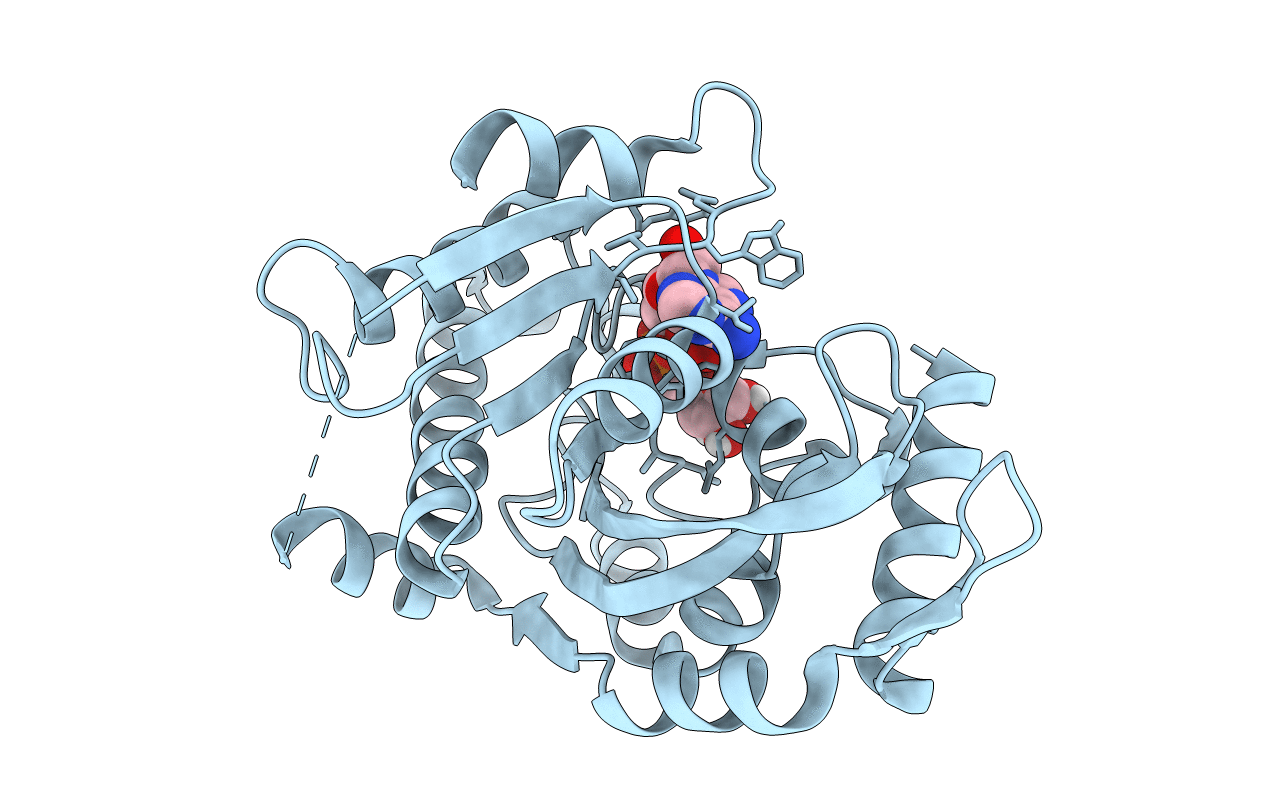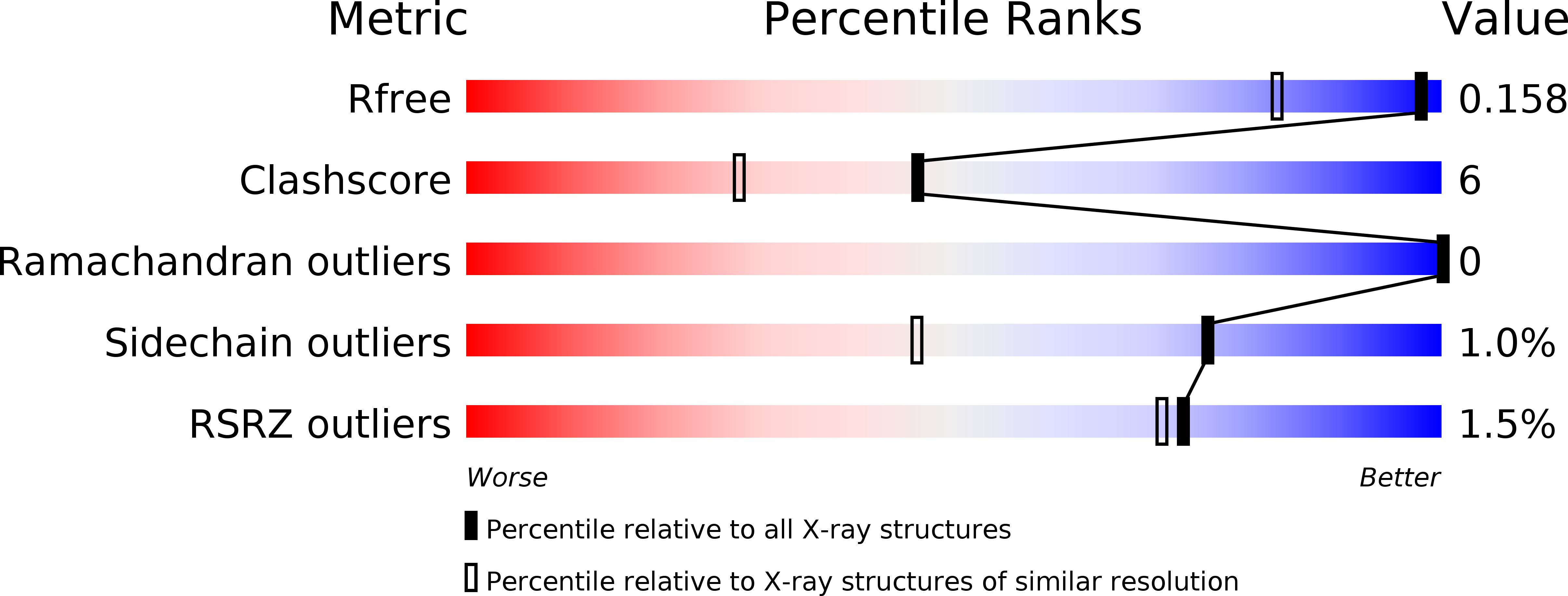
Deposition Date
2011-06-18
Release Date
2011-08-24
Last Version Date
2023-09-13
Entry Detail
PDB ID:
3SIG
Keywords:
Title:
The X-ray crystal structure of poly(ADP-ribose) glycohydrolase (PARG) bound to ADP-ribose from Thermomonospora curvata
Biological Source:
Source Organism:
Thermomonospora curvata (Taxon ID: 471852)
Host Organism:
Method Details:
Experimental Method:
Resolution:
1.28 Å
R-Value Free:
0.16
R-Value Work:
0.14
R-Value Observed:
0.14
Space Group:
P 21 21 21


